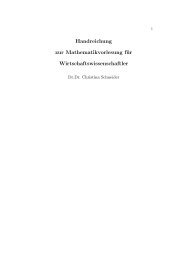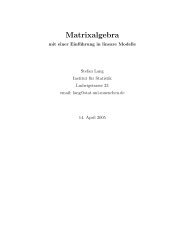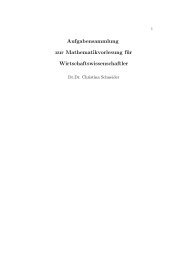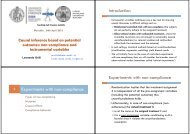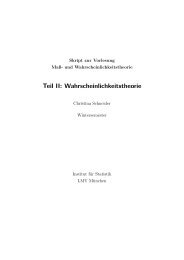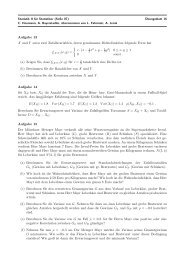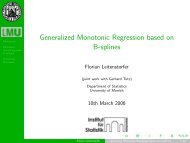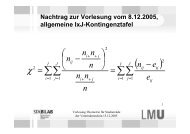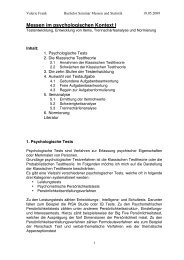Create successful ePaper yourself
Turn your PDF publications into a flip-book with our unique Google optimized e-Paper software.
4<br />
• classes <strong>to</strong> define how objects of a certain type look like, and<br />
• methods <strong>to</strong> define special functions operating on objects of a certain class.<br />
For dealing with several penalties, also user-defined ones, we introduce a class of R objects<br />
called penalty. There are two approaches in R for dealing with classes, that is the ‘older’<br />
S3 approach and the S4 approach as introduced in Chambers (1998). Most classes in R<br />
are based on the classical S3 concept. The more advanced S4 concept requires some more<br />
code but delivers more flawless definitions. However, both concepts have pros and cons.<br />
Some more details and examples are e.g. given in Venables and Ripley (2000).<br />
In S4 classes the structure of an object is clearly specified in the term of slots. This leads<br />
<strong>to</strong> a huge amount of formality and precision. The structure of an S3 object can only<br />
be defined implicitly using the function structure(). As a direct consequence, checks<br />
on data structures or arguments can be swapped out <strong>to</strong> the initialization (or pro<strong>to</strong>type)<br />
function. This possibility is only of limited merit when dealing with penalties due <strong>to</strong> a<br />
huge amount of heterogeneity among different penalties. Reasons for it are e.g. a different<br />
number of tuning parameters, or that the computation of the penalty matrix can depend<br />
on the regressor matrix X as for the correlation-based penalty (Tutz and Ulbricht, 2009)<br />
or just on dimension p and information whether or not there is an intercept included in<br />
the model (ridge penalty in linear models). Consequently, checks on correct specification<br />
must also be cus<strong>to</strong>mized and hence included in the several penalty objects.<br />
Method Type Input arguments Output<br />
penalty character a character containing<br />
the penalty name<br />
lambda numeric vec<strong>to</strong>r a numeric vec<strong>to</strong>r containing<br />
the tuning parameters<br />
getpenmat() function beta = NULL, ... p×p penalty matrix evaluated<br />
at beta if necessary<br />
first.derivative() function beta = NULL, ... J dimensional vec<strong>to</strong>r<br />
containing p ′ λ,1 , . . . , p′ λ,J<br />
a.coefs() function beta = NULL, ... p × J matrix containing<br />
the coefficients<br />
a 1 , . . . , a J .<br />
Table 1: Methods operating on objects of class penalty. The dot opera<strong>to</strong>r ... allows<br />
for some further arguments.<br />
Furthermore, the clear specification of S4 classes is another drawback concerning our<br />
applications. When dealing with quadratic penalties<br />
P λ (β) = 1 2 β⊤ M λ β, (6)



